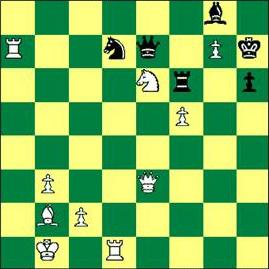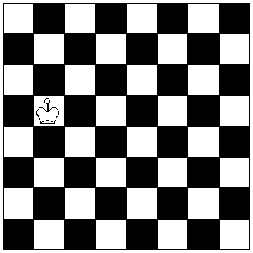
White to move and mate in two.
Solved by: Arijit Bhattacharyya, Gerald Harrison
|
Chess Puzzles
The Contest Center 59 DeGarmo Hills Road Wappingers Falls, NY 12590 |
| |||||||||||||||||||||

| Mate in 2
(contributed by Vitaly Astistov)
White to move and mate in two. Solved by: Arijit Bhattacharyya, Gerald Harrison | |

| Minimum Mate
(contributed by David V. Murray)
White to move and mate in the fewest possible moves. Solved by: Pete Wiedman, Arijit Bhattacharyya | |

| Mate in 3
(contributed by Vitaly Astistov)
White to move and mate in 3. Solved by: Pete Wiedman, Gerald Harrison, Arijit Bhattacharyya | |
|
Attack #2 (contributed by Sudipta Das)
Place 2 queens, 2 white bishops and 2 black bishops on this chessboard so that every square is under attack. One king has already been placed. |  | |

| Move and Win
(contributed by Gilles Ravat)
White to move and win. [This problem was originally created in 1865 by Max Lange.] | |
| WK | |||||||
| BB | BQ | BK | |||||
| WR | |||||||
| BB | WN | ||||||
| WB |
 |
Send us an email to submit answers to these chess puzzles, to ask for help,
or to submit new chess puzzles.
Be sure to change the $ to an @ in our email address. | ||
| Interactive Online Games | |||
| <<< PREV | HOME | MAP | NEXT >>> |